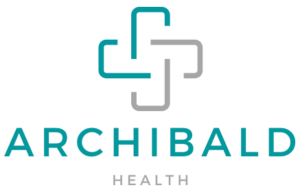When we research massage, we soon discover that this is a touch therapy that goes back thousands of years. There are many different forms of massage and massage therapy. The most famous one is perhaps therapeutic Swedish massage.
Massage is a natural therapy with many benefits including better circulation and muscle tone. It helps to reduce pain and boosts the immune system. Popular techniques include aromatherapy and sports massage.
History of Massage
Massage is maybe the oldest form of medical care. Paintings in Egyptian tombs show that massage was practised in Ancient Egypt. However, massage therapy originated in more countries than just Egypt.
Indian and Chinese manuscripts mentioned different massage techniques. In India, massage has long been recognised as a valuable asset in Ayurvedic medical practices.
The massage strokes in each particular form of massage vary. This benefits the patient. If one form of massage does not remedy the condition, another one may.
Historically, we see massage becoming part of mainstream medicine during the 1st World War. Soldiers suffering from nerve injuries or shell shock were treated with massage therapy at St. Thomas Hospital, London.
Today, many forms of massage are considered mainstream. As long as you visit a qualified massage practitioner, your symptoms will improve.
Key Principles of Massage
All forms of touch are experienced through the skin. We often forget the skin is the body’s largest organ. Our sense of touch starts to develop in the womb. As the nervous system continues to develop, our sensitivity to touch and the benefits it offers increase.
Our skin consists of different layers. The second layer, the dermis, has thousands of receptors that respond to stimulation. This stimulation can come from a variety of sources including cold and heat. We have learned the myriad of receptors in the dermis especially respond to touch.
Gentle touch including massage strokes helps the body to release endorphins. The release of endorphins helps to reduce pain.
More vigorous massage strokes and techniques work in other ways. They help to stretch and ease tension in muscles, tendons and joints.
It is well recognised massage can govern heart rate, blood pressure, respiration and even digestion.
Scientific studies have confirmed massage lowers the amount of the stress hormone cortisol in our bodies.
Evidence and Research
Today, an extensive body of research is available into the health benefits of massage.
The theory of massage has been tested and demonstrated in a variety of settings including hospitals and offices. It has been found that massage can possibly reduce cells that attack the body’s immune system.
Asthmatic children experiencing an attack feel better when they receive massage therapy alongside regular treatment. It is possible that regular massage can reduce the frequency of attacks.
There is also a clear link between lower glucose levels and massage in patients with diabetes.
Many health systems throughout the world offer massage as part of in-house hospital care. Massage therapy is seen as particularly important in Japanese hospitals where local practitioners are often employed to deliver massage to hospitalised patients.
The Theory Of Massage
If we want to delve further into massage, we need to look at the theory of massage.
One of the first names we come across is Per Henrick Ling and his Swedish Movement Treatment. This forms the basis of almost all modern massage techniques,
Swedish massage makes the most out of Ling’s extensive knowledge of the circulatory and lymphatic systems. The basic technique consists of a series of different strokes or effleurage as it is also called. Kneading, friction and hacking also form part of Swedish massage practice. If you go for regular massages, you probably recognise many of these strokes.
What Are the Main Uses Of Massage?
This is a wide and well-practiced form of complementary medicine. As the many different forms of massage including aromatherapy, have such an extensive range of health benefits, there is no reason why you should not try going for a massage.
Often, it is a matter of finding the right massage practice which suits you. Just like when you go for a doctor’s appointment, a professional massage appointment starts with a consultation.
The first appointment may take longer. After the first session, you are often recommended a treatment programme. Once this is completed, it is important to continue with regular visits.
Main uses of massage include:
● Stress
● Insomnia
● Headaches
● Migraines
● Pain relief
● Muscle aches and tension
● Digestive disorders
● High blood pressure
● Constipation
● Arthritis
● Rheumatism
● Crohn’s Disease
● Back pain
● Asthma
● Respiratory conditions
Final Thoughts and Medical Opinion
Both clinical studies and patient reports show that there are advantages to “going for a massage.” If you have a particular medical condition, you should explain this to the practitioner.
Most doctors endorse massage therapy when carried out by a professional. In Australia, you need to hold HLT42015 Certificate IV in Massage Therapy Practice and the HLT52015 Diploma of Remedial Massage to work as a massage therapist.
Massage as a therapy is tried and tested and well worth considering as a complementary therapy.
